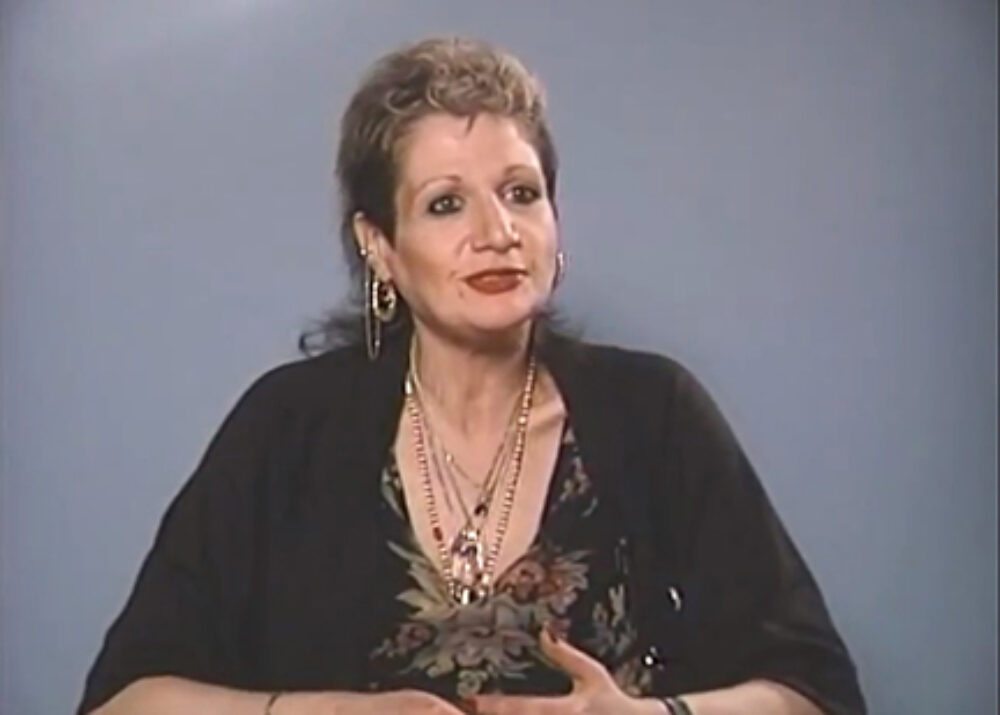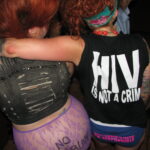Aimar Arriola was the 2014 Visual AIDS Curator in Residence. During his time in New York he took advantage of the many HIV/AIDS related events happening throughout the city. For the TIME IS NOT A LINE issue of the WE WHO FEEL DIFFERENTLY journal, Arriola writes about the impact activist Iris De La Cruz made on him, and the ongoing role of women within the HIV/AIDS movement, including Visual AIDS artist Jessica Whitbread. Read an excerpt of the essay below.
I was deeply moved by something said during the opening minutes of the presentation of Jessica Whitbread's community art project and book Tea Time: Mapping Informal Networks of Women Living with HIV/AIDS, organized by Visual AIDS and the New School’s Queer Collective. During the event, which took place on March 19, 2014 at the New School's Lang Café, Ted Kerr—introducing an excerpt from a video interview with Iris De La Cruz (1954-1991), the now legendary Latina HIV activist about whom I have only recently learned—spoke of the need to avoid a binary distinction between the living and the dead. That experience and the invitation to comment on Jessica's project here challenged me to confront the many times I have more or less consciously fallen into such a binary division, giving precedence to the words and actions of those of us who have the (dubious) privilege of still being alive. In her videographic speech, Iris De La Cruz—who tirelessly fought to ensure that other women were not, as she herself had been, left without options or resources—discussed the difficulties of being an HIV-positive woman in an environment dominated by gay men, that is, within organized AIDS activism. She specifically addressed the need for spaces where poz women can interact in a caring environment: "I got a lot of love and support [from the gay male community] but I also had women's issues. I needed to hear what other women had to say. That was really important. When I walked into a room and there were twenty five women in this room and they were all seropositive or were dealing with AIDS, all of a sudden I wasn't the only one." As if politically possessed by the spectre of Iris De La Cruz, the ultimate aim of Tea Time is to contribute to the construction of those spaces.
As Jessica Whitbread explains, Tea Time began as a personal journey into her own understanding of HIV in relation to gender. She was interested in finding a way to build connections between women with HIV living in diverse communities in Canada. To that end, she devised a community-based research project that joined women living with HIV together using what she refers to as “the Tea Time method.” The Tea Time method relies on the feminist and queer strategy of re-signifying “tea time,” whose origin is steeped in colonialism and sexism, as a space for empowerment. After an initial research phase, Whitbread’s Tea Time initiative has grown into a worldwide open-source community arts project. Its vision resonates in other recent initiatives like The Future of Feminist Tea Party by Quito Ziegler and the Jane Austen-inspired DYI feminist tea parties organized by The Austenettes in Spain. Whitbread’s project, though, is the first to make use of the cultural ritual of tea time to address the issue of women living with HIV/AIDS.
I would like to clarify at the outset that my response to the invitation to comment on Tea Time is conditioned by a number of things. First, my privileged position as a queer-identified, HIV-negative biological man. I in no way intend to act as if I knew what it means and how it feels to be a poz woman. In her presentation, Jessica shared the concerns of her designer friend about “occupying a space that didn't correspond to him” when he was asked to design the cover for the special edition of the book. That somehow spoke to me. Also pertinent to my response is having attended, over a period of roughly a month, a fairly large number of meetings, talks and other events—including the presentation of Tea Time—held in spring of 2014 in New York while I was there as the 2014 curator in residence at Visual AIDS. These events included an exhibition on the history of activism in the city, which was accompanied by a parallel program of events geared to providing insights on the participation of the Latino community and women in ACT UP, among other topics. As part of my research, I have also had private conversations with artists, scholars and activists on aspects of the visual, aural and political cultures of AIDS. My understanding of Tea Time takes place in this broader context.
Learn about other women making a positive impact by reading the whole essay: Spectres of Iris De La Cruz.
We Who Feel Differently Journal is a sporadic online publication that addresses critical issues of queer culture. It features analyses and critiques of international Lesbian, Gay, Bisexual, Trans, Intersex, Queer and Questioning politics from queer perspectives.


